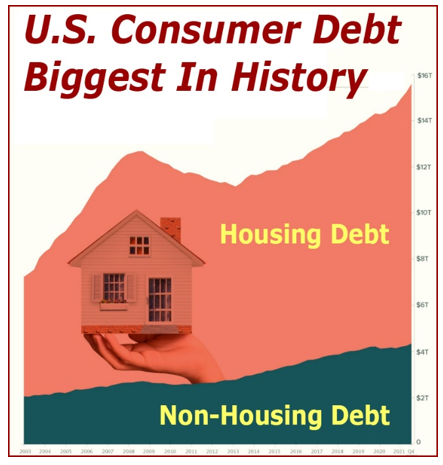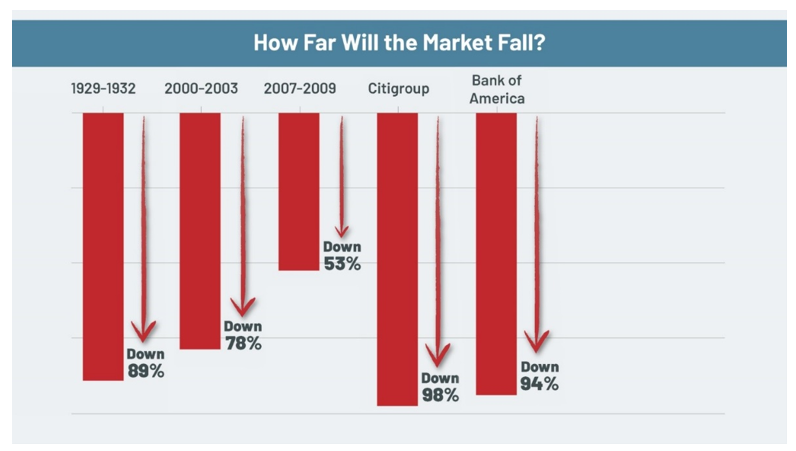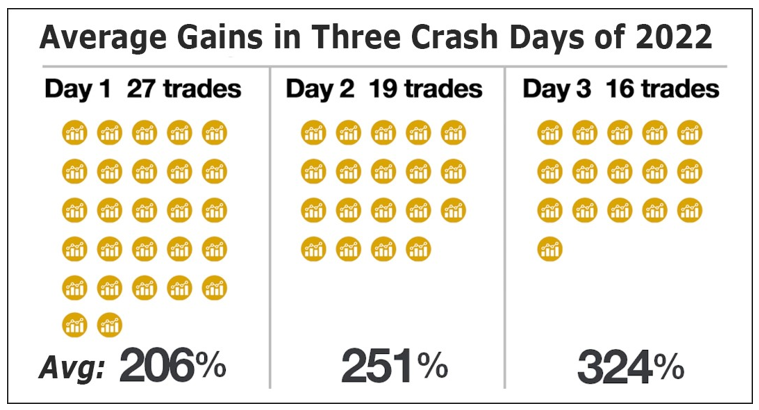 |
| By Martin Weiss |
A rogue wave is about to strike at the core of the American economy.
No one is talking about it yet. But that's only because they don't have the data we have.
Or because they're sticking their head in the sand.
They don't accept the fact that double-digit inflation is already here, that a recession is already baked in.
They don't realize that Americans are way over their heads in debt — almost $16 trillion, the biggest in history.
They don't remember how abrupt rate hikes by the Fed have always busted debt bubbles …
Or how those busts have always set off a chain reaction of bank failures.
Back in the Great Debt Crisis, the government came to the rescue. Bush, Obama, Bernanke & Co. came to the rescue.
But in those days, there was no inflation to speak of. So they had a free reign. They could print money and bail out banks to their heart's content.
No more!
Now, with inflation near double digits, there's no way they can print money like crazy.
No way to stop debt bubbles from exploding.
No way to rescue all the banks on our endangered list (1,381 to be exact).
And no way to stop the market from plunging.
How far could the market fall? Well, here's the history:
In the Crash of 1929 and the big decline that followed, the average stock in the Dow Jones Industrial Average fell 89%.
In the early 2000s, the average stock in the Nasdaq Composite Index fell by 78%.
And in the 2008 Debt Crisis, the average stock in the S&P 500 fell 53%.
That's bad enough. But notice I said "average" stock, and not all stocks are average.
In the early 2000s, a lot of supposedly great internet stocks lost 99%, even 100% of their value.
In the 2008 Debt Crisis, shares in the largest bank holding company in the United States, Citigroup, fell by 98%. Shares in the second largest, Bank of America, fell 94%.
These giant banks and other banks were on our endangered list many months before they failed. And I repeat: Now we have 1,381 on our endangered list.
But the great economic disaster ahead offers the potential for equally great profit opportunities when markets fall.
For example, on three crash days in May, I counted 62 distinct trades identified by our Weiss Stock Ratings that could have made you at least 100% gains each.
On the first crash day, we saw 27 trades that returned gains ranging from 100% to 419%. The average gain was 206%.
On the second crash day, the numbers were better: We saw 19 trades with gains ranging from 100% to 809%. Average gain: 251%.
On the third crash day, it was even better than that: There were 16 trades ranging from 100% to 1,130%. Average gain: 324%.
Even if you invested only $10,000, and even if you chose the least profitable of these trades, you could have made about $10,000 on the first day, $10,000 on the second day and another $10,000-plus on the third day. That's a total of $30,000 in gains.
Or, if you invested those same $10,000 in just the average trades — not the best, just the average ones — you could have made $20,600 on day one, $25,100 on day two, and $32,400 on day three. That's a total of $78,100.
All on days when the market plunged.
And our research indicates that's just the tip of the iceberg; that there's significantly more opportunity on the horizon in these turbulent times.
To learn more, check your inbox for an email from me inviting you to my half-hour video presentation, Collapse of 2020: How To Build Wealth Swiftly.
Good luck and God bless!
Martin




